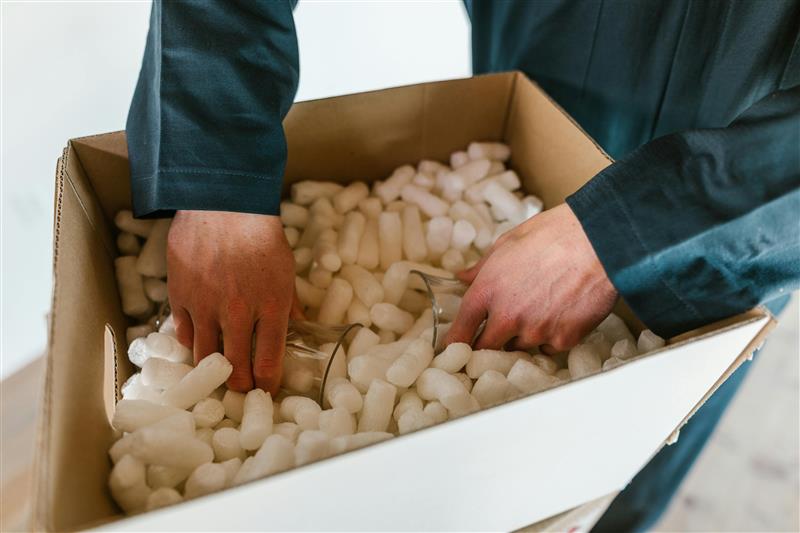04 November 2025

Source: https://www.pexels.com/uk-ua/photo/7464249/
Packaging is commonly an underestimated thing when it comes to building an effective and sustainable delivery strategy. What companies choose for packaging and how they pack their product influence many aspects, starting from cost optimization and ending up with a corporate image – yes, today’s clients are more aware of environmental policies than ever before!
While packaging is only a small, rarely-discussed aspect, it matters. This article will explain to you why more and more businesses are investing in designing money-saving and eco-friendly packaging solutions today.
Using too much packing material, too big boxes, or bags is a common practice that no longer works. Instead of this, companies try to use right-enough amount of packing materials. Right-sizing looks like a simple decision, yet it helps to save up to 50% of packaging costs and minimize the negative impact on the environment.
Plastic, which is one of the main pollutants on the planet, is not the only option for packing materials. Today, businesses are showing increasing interest in biodegradable polymers, fabric, paper, starch, etc. Minimizing spending on utilizing packing material and plastic waste is not the only benefit of such an approach. Eco consciousness also becomes a part of a marketing strategy, improving a company’s image and reputation.
Proper packaging is crucial for protecting goods during loading and transportation. Today, companies are seeking a balance between minimizing the amount of packaging without compromising goods safety. Many businesses use airbags, foamed cushions, or additional cardboard holders. Such solutions work better than plastic wraps and minimize unnecessary waste.
Some designers turned packaging into attractive bags and boxes that can be used repeatedly. Comfortable zippers, locks, unusual decorations – all that allows the use of the creative packaging as handy bags, containers, or home decorations. Such packages make the product more attractive and increase the level of clients’ satisfaction.
Today, packaging is not just about holding transported items together – it also connects companies and specialists who collaborate on innovative solutions and sustainable designs. Scientists, manufacturers, engineers, and even customers: everyone plays a crucial role in the way classic packaging is changing. Yet, what is the final aim of this transformation?
Each produced and transported item means another portion of CO2 and solid waste. That’s why the way to environmentally safe commerce shall begin from small things, like packaging. Optimizing the size of packaging for each product and switching from plastic to nature-friendly materials look like small steps, yet they initiate huge changes.
Cost optimization is more than cutting expenses; it’s also investing in those technologies and processes that help to control and to re-address the financial flow smartly and effectively. Investing in new recycling practices or creating new, more sustainable materials for packaging may require some financial funds, which are, however, compensated quickly.
Companies can implement more environmentally safe packaging materials that are 100% recyclable or create the type of packaging that can be used again as bags, boxes, home décor, or more. In both cases, such decisions help to improve clients’ experience and companies’ popularity.
Packaging is not an independent aspect – it influences many operations connected to commerce and delivery, making them more effective in most cases. Right-sized, secure packaging that is designed for safe transportation and easy utilization helps to increase the speed and efficiency of the entire delivery process.
Modern IT solutions help to monitor the efficiency of using different types of packaging, analyze the collected data, and use it for decision-making. With smart, often AI-driven software, it’s easy to pick up the best variant of packaging for open platform transportation, dry van shipping, or delivery inside a refrigerated container.
The big future starts from small changes, and packaging is one of those. Today, more and more companies are ready to invest millions to invent environmentally friendly packaging materials that won’t speed up climate change and won’t increase spending each time a product is wrapped. Such a step may look small, yet it leads the environmental revolution in the world of commerce and transportation.
04 November 2025
03 November 2025
03 November 2025
03 November 2025